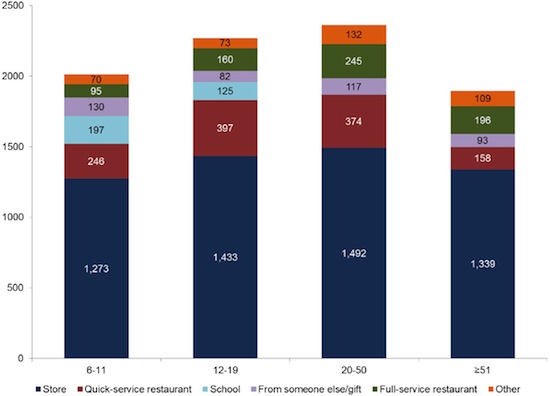I was contacted last week by one of the AcademicEarth.org creators of the video “The Economic Cost of Obesity,” wondering if I would like to share it with you, my blog readers. I finally had a chance to view it yesterday, and, in a bit of serendipity, one of my nutrition e-mail news blasts referenced recently published research by the chair of my department, Adam Drewnowski. First, the video:
A brief criticism: The video falls into what I feel is an unfortunate trend of using carefully chosen numbers, taken out of full context, to make a somewhat sensational point. For example, it is true that the obesity rate is higher among people with less than a high school degree and among children and adolescents that live in poverty. However, the social determinants of health are complex, and educational status and income level are just two pieces of that puzzle.
That said, the video does makes some important points. One is that commodity crops like corn that produce the raw ingredients for “junk food” do receive more subsidies than do apple growers, which contributes to the low price point on many highly processed foods, including fast food and packaged snack foods.
Another is that fast food meals tend to be much higher in calories, dollar for dollar, than do fruits, vegetables and many other healthful foods. I would add two clarifications, however:
- Restaurant meals in general (at all price points) tend to be higher in calories, salt, sugar and fat than what people prepare at home from scratch, using fresh and minimally processed foods.
- Some healthful foods (dried beans, oats, rice, some fruits and veggies, canned tuna) can be quite affordable.
- Fast food, by way of it’s cheap calories, may certainly play a role in obesity and related health problems, but the blame can’t be entirely laid there, because that’s not where the majority of calories are purchased.
Regarding that last point, I turn back to Dr. Drewnowski’s research, published as “Energy intakes of U.S. children and adults by food purchase location and by specific food sources,” in Nutrition Journal, looked at where people purchased/acquired most of their calories in a single day: stores, quick-service restaurants/pizza, full-service restaurants, school cafeterias or food provided by someone else (including food gifts). Here’s the breakdown, by age:
You’ll notice that most calories come from stores. Grain-based desserts and yeast bread purchased from stores are the top source of calories (soda purchased from stores is right up there for a few age groups). If you want to geek out on tables and graphs, check out the whole article.
The data came from the first 24-hour dietary recall collected from 22,852 people in the 2003-4, 2005-6 and 2007-8 National Health and Nutrition Examination Surveys (NHANES). This type of cross-sectional data collection, which measures what a lot of people ate on one specific day of their lives, isn’t perfect, but it’s a decent way of measuring dietary habits on a population level.
I personally don’t eat at the big fast food restaurants, because that food doesn’t taste good to me. I also don’t shop in most mainstream grocery stores, because the huge displays of soda and snack foods sort of drive me nuts, creating an overload of visual stimuli before I can even get to “shopping the perimeter.” What I do like to do is identify the true source of a problem, instead of just quickly pointing fingers.
As Dr. Drewnowski said in the Food Navigator article “New research into exactly where Americans’ calories are coming from throws up surprising results” [nice pun], his research suggests that “if we want to reduce calories, then supermarkets ought to be included in the battle against the obesity epidemic.” [Disclaimer: I don’t really like words like “battle” and “war” in this context.]







